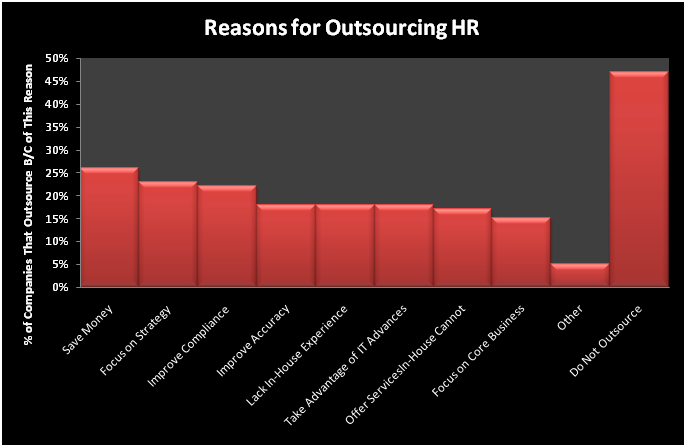Projected to exceed $53.9 billion by 2020, the concept of outsourcing your company’s HR functionality is a popular and worthwhile idea.
With more companies performing business on the go, as well as the increasing number of startups that are launching from homes, offloading these responsibilities to a dedicated company might even be an essential piece of your business model.
Benefits of Outsourcing
Image source
Third-party HR management can be a boon to startup enterprises that want to make a name for themselves. By tapping into a pool of HR veterans and champions, even on a temporary basis, you can jumpstart your initial roster of talent and begin overcoming the other hurdles to running a successful business.
You’ll have better control over compliance right from the start. Although this might not be an issue between two or three employees, those who specialize in the discipline are a must for any company that hopes to maintain a positive reputation in the 21st century. Outsourcing this responsibility even gives you the opportunity of exploring your options, trying out different compliance officers and forging strong relationships for the future.
Outsourcing agencies also have access to the latest in technological advantages, which could either be inaccessible to the average consumer or too expensive for a startup business owner to afford. Such systems, which typically feature big data processing capabilities, next-gen analytics and machine-based learning, can give you a significant advantage over competing startups and even some of the industry pros.
All these things give you the ability to focus on other areas of your business, such as market research, product development, advertising, quality assurance and customer service, instead of worrying about the technicalities and micromanagement involved with in-house HR.
Beginning the Process
The process of outsourcing your company’s HR functionality – whether it’s on behalf of a startup enterprise or an established brand – is much easier than implementing your own HR department.
The first step usually involves an initial interview as well as an in-depth audit of your current business model and structure. Not only does this give the agency the opportunity to identify any risks or concerns, but it also gives them an idea of how to proceed with a full-scale HR implementation.
In most cases, an agency representative will contact you to guide you through the process. You’ll typically have full control over the specifics of your partnership, including the inclusion of any supplementary or additional services, as well as constant contact with those who have been assigned to your account.
Not only does this ensure the achievement of your immediate goals and needs, but you’ll also know who to turn to as your company grows and your staffing requirements evolve.
Commonly Outsourced Tasks
Some HR-related responsibilities and tasks are more frequently outsourced than others. According to the Society for Human Resource Management, 401(k) administration and employee assistance/counseling are tied as the most commonly outsourced function. Other duties that are often outsourced to third-party agencies include retirement and pension planning, temporary staffing and recruitment, background investigations, training, executive coaching and more.
General benefits administration, including workers’ comp and health insurance, can impact companies of all sizes. According to ADP Research, outsourcing these areas can result in increased compliance, greater cost efficiency and enhanced business integration.
Workforce analytics are commonly outsourced, too. Given the fast-paced evolution of technology – including big data, online collaboration and cloud computing – it can be difficult for the average business owner or entrepreneur to meet these demands on their own.
However, given that nearly 40 percent of small businesses based in the U.S. have already embraced the cloud, and with that number expected to increase more than twofold by 2020, the technology has grown too big to ignore any longer. Some small- and medium-sized enterprises have gone so far as to name cloud computing as the topmost priority.
Achieving Internal Growth by Tapping Into External Relationships
While it may sound counterintuitive, many small- and medium-sized businesses have achieved tremendous internal growth by utilizing the knowledge and services of their external partners.
Apart from freeing up resources that would be better served in other areas of your business, professional relationships such as these can provide you access to a wealth of tools and opportunities that can set you apart from the competition.
Download the white paper and see how you can create an integrated, engaging employee experience using people analytics!
Image via Pixabay







I can see how hiring an HR service could help you save money and time. Being able to hire one company sounds much more simple then having to hire employees and have to worry about office space for them. I like your point about how you will still have full control over the specifics of your partnership with an HR service.